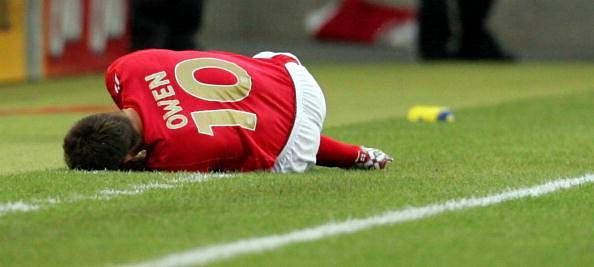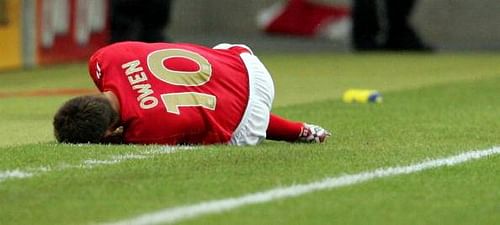
Everything you need to know about the ACL injury
The name itself is enough to make any athlete shudder, no matter what sport they practice. Short for the anterior cruciate ligament, this ligament is located in the knee. The job of all ligaments is to connect two bones and the ACL is no different.
Along with three other ligaments, the ACL's job is to connect the femur and tibia. The ACL and PCL (Posterior Cruciate Ligament) cross the knee diagonally as shown in the picture below. The difference is that the ACL is positioned in the front of the knee whereas the PCL is at the back.
This, unfortunately, is why the ACL is so susceptible to injury. It is at the war front, where most of the impact occurs.
Unfortunately, ligaments are quite easy to tear, the anterior cruciate ligament being one of the most vulnerable in the body. When the ligament is put under sudden stress or heavy impact, the connecting tissue may break. In sport, this is surprisingly easy to do.
When an athlete’s foot is placed on the ground and something hits it, the knee joint bends into an unnatural position and the ligament undergoes shock, possibly causing it to snap. This is very frequent in football. When a defender goes for a rash tackle and gets the leg instead of the ball, the knee joint can be bent, causing an ACL tear.
A sudden change in movement may also put the ligament under a lot of stress for a short period of time resulting in a large impulse (for the physics geeks out there) and ultimately causing the ACL to snap. This is very common in tennis, as players need to rapidly change their direction when an opponent hits the ball to a region where the player is not expecting.
Common in basketball, baseball, and American football
An ACL injury is particularly notorious for it’s long recovery time and it’s prevalence among athletes. Depending on the severity of the tear, this injury can last for months or even years. Some symptoms of an ACL tear include a popping noise, an inability to move your knee very well, and swelling.
If you think you’ve torn your ACL, don’t just put ice on it- see a doctor get a proper diagnosis. If left to it’s own devices, the torn ACL will let the femur and tibia rub against each other and the friction will destroy the cartilage, resulting in serious bone damage and possibly even osteoarthritis and arthritis.
It’s not all bad, though. Of course, knee strengthening exercises are your best shot at minimizing the risk of the injury. Additionally, the likelihood of a complete ligament tear is pretty rare. A partial ligament tear is obviously frustrating but can be overcome with the use of physiotherapy and exercise.
Another way to deal with the injury is to not get injured at all. When you jump, land correctly. When you are changing direction, make sure you move with your knees on your feet- do not let them collapse inwards. And obviously, remember to warm up and stretch before you play.
The list of casualties of the anterior cruciate ligament injury is almost endless. Up to 200,000 athletes in the U.S alone get diagnosed with an ACL rupture every year. But one of the biggest targets of the injury is football (soccer) players.
The ACL injury makes up a large portion of the uncountable sidelined players. Liverpool injury duo Joe Gomez and Danny Ings are prime examples of what a ruptured anterior cruciate ligament injury can do to you.
They’ve been sidelined since the beginning of the season and only look like they’ll be back at the end of the season. Bournemouth’s Callum Wilson has also been sidelined for the entirety of the season due to an ACL tear. The injury can be psychologically devastating, being described by Danny as the ‘lowest point’ in his career.
American football is probably the second biggest casualty to the ruinous injury, as the NFL have suffered from it since it’s formation in 1920. During the 2015 preseason, a record twenty-seven players were downed by the injury.
Tennis has also had it’s fair share of ACL damage, a famous incident being Mary Pierce’s career ending collapse on the court after having three match points. The French-American ruptured her ACL and never returned to the circuit again.
You may be thinking that this ACL injury seems grim. And with good reason; this is one of the most frustrating injuries an athlete can be given. But it’s important to realize the risks and to negate the risk of you tearing your ACL.
But as medical knowledge and technology advances, an anterior cruciate ligament injury is becoming more and more preventable and curable. Decades ago, an ACL injury spelt the end of a career.
But these days, our treatment of the injury is improving so if you end up getting this injury, don’t worry too much. NBA superstar Derrick Rose suffered an ACL injury and look where he is now! It’s definitely not impossible to recover, but being aware of this threat is a necessary piece of knowledge for all budding and experienced athletes.
